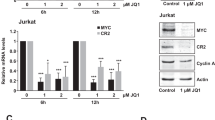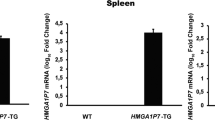Abstract
PERMISSIVE cell systems for the replication of the Epstein–Barr virus (EBV) and some of the related EBV-like agents (for example, Herpesvirus papio and herpesvirus pan) have not yet been established1. EBV is regularly demonstrated in a small number of cells from lymphoblastoid lines of B-cell origin which have been derived from certain lymphoma patients, most frequently from Burkitt's lymphoma or patients with infectious mononucleosis, but also from healthy EBV-reactive individuals. EBV DNA usually persists in cells of these lines in multiple copies2–4, but spontaneous induction of viral antigens and particle synthesis occurs in a majority of the lines at a low rate. To some extent, the percentage of induced cells seems to be cell line-specific1, and two lines which are rather high producers of EBV are the P3HR-I line of BL origin5 and the marmoset B95-8 line isolated from lymphocytes transformed with EBV of infectious mononucleosis origin6. At any time during cultivation, 2–10% of the cells reveal viral capsid antigen synthesis as determined by indirect immunofluorescence7. All attempts to increase the virus yield in these lines by temperature shifts or chemical or physical inducers (IUdR, mitomycin C, X rays) have usually resulted in only barely significant enhancement of viral replication8–10. We now report on a very efficient induction of EBV and other oncogenic herpesviruses by the well established cocarcinogen and tumour promoter 12-O-tetra-decanoylphorbol-13-acetate (TPA)11. In addition some TPA-treated cells show cytopathogenic changes, including polyploidisation. These observations may enable a more complete investigation of the virus-cell-gene balance hypothesis12.
This is a preview of subscription content, access via your institution
Access options
Subscribe to this journal
Receive 51 print issues and online access
$199.00 per year
only $3.90 per issue
Buy this article
- Purchase on Springer Link
- Instant access to full article PDF
Prices may be subject to local taxes which are calculated during checkout
Similar content being viewed by others
References
zur Hausen, H. Biochim. biophys. Acta 417, 25–53 (1975).
zur Hausen, H. & Schulte-Holthausen, H. Nature 227, 245–248 (1970).
Nonoyama, M. & Pagano, S. Nature New Biol. 233, 103–106 (1971).
zur Hausen, H., Diehl, V., Wolf, H., Schulte-Holthausen, H. & Schneider, U. Nature 237, 189–190 (1972).
Hinuma, Y. et al. J. Virol. 1 1045–1051 (1967).
Miller, G. & Lipman, M. Proc. natn. Acad. Sci. U.S.A. 70, 190–194 (1973).
Henle, G. & Henle, W. J. Bacteriol. 91, 1248–1256 (1966).
Hampar, B., Derge, J. G., Martos, L. M. & Walker, J. L. Proc. natn. Acad. Sci. U.S.A. 69, 78–82 (1972).
Gerber, P. Proc. natn. Acad. Sci. U.S.A. 69, 83–85 (1972).
Klein, G. & Dombos, L. Int. J. Cancer 11, 327–337 (1973).
Hecker, E. in Carcinogenesis: A Comprehensive Survey (eds. Slaga, T. J. Boutwell, R. K. & Sivak, A.) (Raven, New York, in the press). Cancer Res. 28, 2338 (1968); Int. J. Cancer 18, 122–128 (1976).
zur Hausen, H. Behring Inst. Mitt. 61 (1977).
Balmain, A. & Hecker, E. Z. Krebsforsch. 86, 251 (1976).
Fleckenstein, B., Müller, I. & Werner, J. Int. J. Cancer 19, 546–554 (1977).
Author information
Authors and Affiliations
Rights and permissions
About this article
Cite this article
HAUSEN, H., O'NEILL, F., FREESE, U. et al. Persisting oncogenic herpesvirus induced by the tumour promoter TPA. Nature 272, 373–375 (1978). https://doi.org/10.1038/272373a0
Received:
Accepted:
Published:
Issue Date:
DOI: https://doi.org/10.1038/272373a0
This article is cited by
-
Epstein–Barr virus: more than 50 years old and still providing surprises
Nature Reviews Cancer (2016)
-
12-O-tetradecanoylphorbol-13-acetate activates hair follicle melanocytes for hair pigmentation via Wnt/β-catenin signaling
Cell and Tissue Research (2016)
-
Induction of epstein-barr virus (EBV) lytic cycle in vitro causes lipid peroxidation, protein oxidation and DNA damage in lymphoblastoid B cell lines
Lipids in Health and Disease (2011)
-
Reactive Oxygen Species Production and Antioxidant Enzyme Expression after Epstein–Barr Virus Lytic Cycle Induction in Raji Cell Line
Biological Trace Element Research (2011)
-
TLR9 triggering in Burkitt's lymphoma cell lines suppresses the EBV BZLF1 transcription via histone modification
Oncogene (2010)
Comments
By submitting a comment you agree to abide by our Terms and Community Guidelines. If you find something abusive or that does not comply with our terms or guidelines please flag it as inappropriate.



